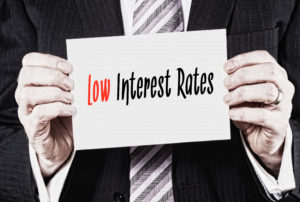My latest MoneySense Retired Money column looks at the vexing problem retirees and near-retirees face when their GICs have matured in recent months. Click on the highlighted text for the full column: Recovering from GIC sticker shock.
If before you were getting 2 to 3% on 2, 3, 4 or 5-year GICs, you may be shocked to discover you’ll be lucky to get 1% and only then by declining to take the first suggested GIC your brokerage has on offer. Going out 5 years may only gain you 0.5% or so, depending on provider.
Nor will matters improve any time soon. The Federal Reserve, Bank of Canada and other central banks have suggested interest rates will stay “lower for longer.” The Fed in particular has indicated rates are unlikely to rise for at least three years.
The piece passes on the views of financial advisors Adrian Mastracci and Matthew Ardrey on what to do about it. It amounts to grinning and bearing it and settling for lower guaranteed returns, or biting the bullet and taking a bit more risk with equities or alternative investments.
But what if you insist on what our family has done historically: leaving half your fixed-income allocation in GICs? Personally, I aim for roughly a 50/50 asset allocation and for the fixed-income portion historically have split it between laddered GICs and bond ETFs, or asset allocation ETFs with a healthy dose of bonds.
Odds are if you use the major discount brokerages of the big banks, you may need to leave them to find more generous GICs available from independent places like Oaken Financial, which has a 1-year registered GIC paying 1.4% and a 5-year GIC currently paying 2% through Home Trust and Home Equity Bank.
Personally, I have reinvested some GIC cash in 2- or 3-year maturities, on the hope rates start to rise three years from now. While 1% or so is pathetic at least it’s a positive number (ignoring inflation): with so many mentions of negative interest rates in Europe and sometimes floated by central bankers in North America, any positive return at is not to be sneezed at.
Conservative Asset Allocation ETFs are one possible alternative
Among the gambits I’ve tried is to raise risk slightly by moving some of this cash to ETFs like Vanguard’s Conservative Income ETF Portfolio [VCIP/TSX], which is 80% fixed income but provides a modest 20% equity kicker. Those who don’t wish to mess with their pre-existing asset allocation might consider the Vanguard Global Bond ETF [VGAB], roughly split between US and global bonds, all hedged back into the Canadian dollar.
One alternative cited by Ardrey is dividend-paying stocks yielding 5% or more, such as Bank of Nova Scotia at 6.38%, or Enbridge at 8.26%: “Tempting but if you choose GICs for security, are such stocks likely to retain their value if we experience another sharp market decline like the brief Covid bear of March 2020?”
In short, there is no perfect alternative to the GIC question, Ardrey concludes, “Gone are the days of strong returns with minimal risk. Income investors need to take on some form of additional risk to achieve their return objectives.”
Other ideas, like alternative investments, are mentioned in the full column.


